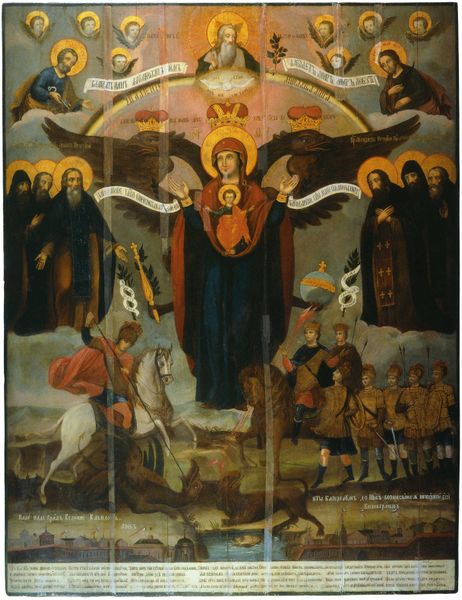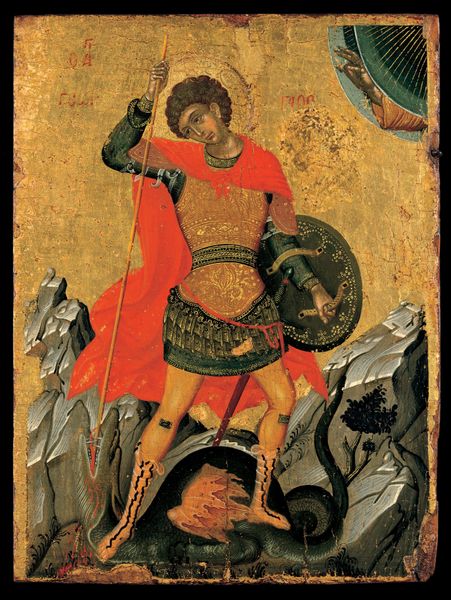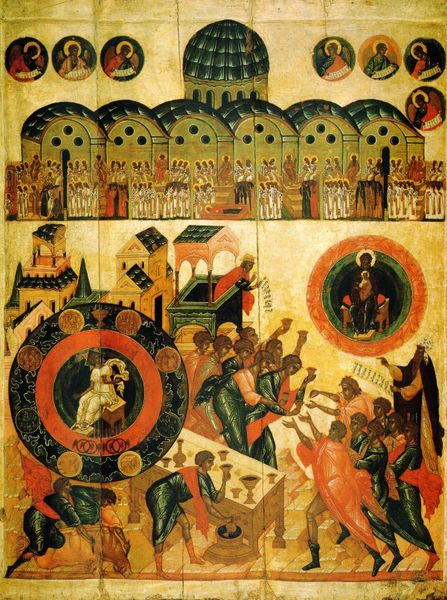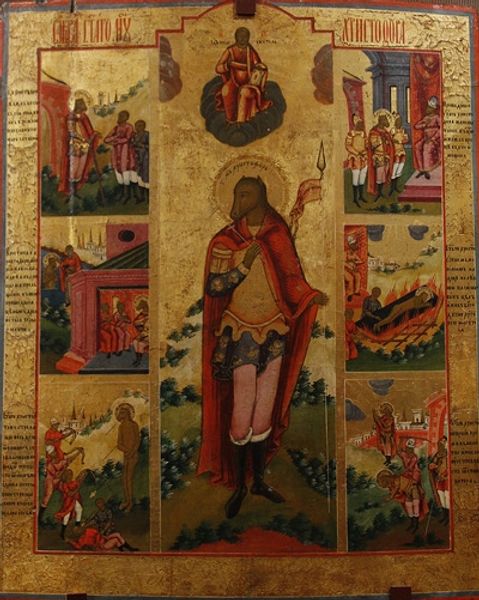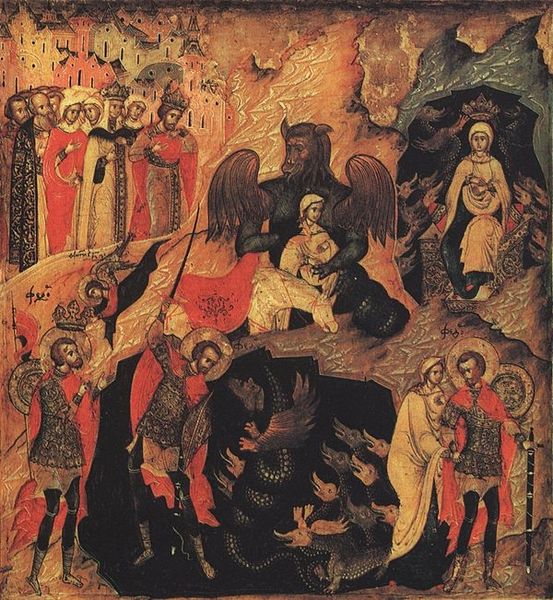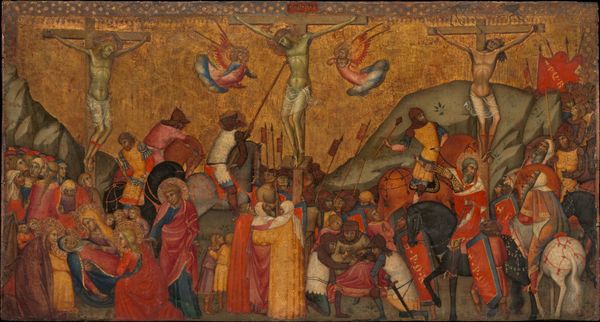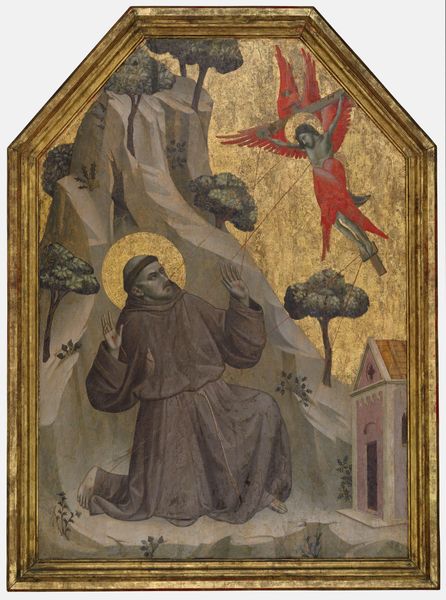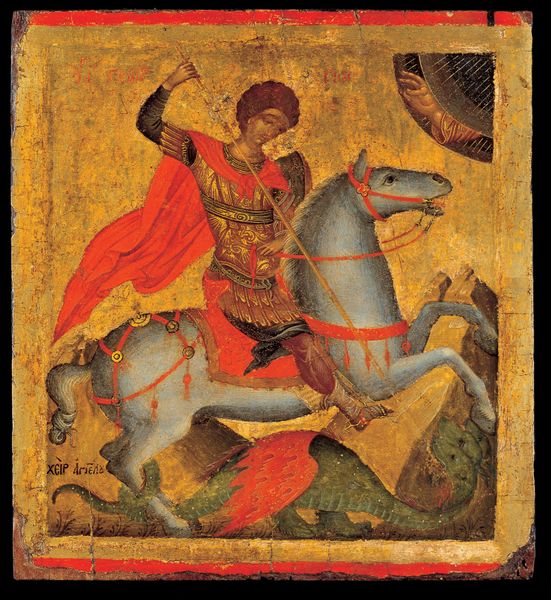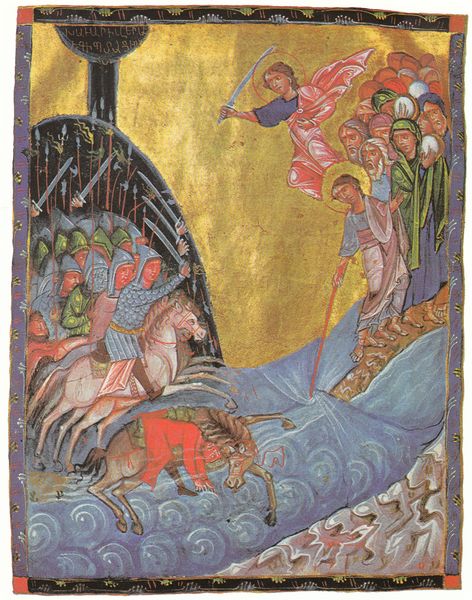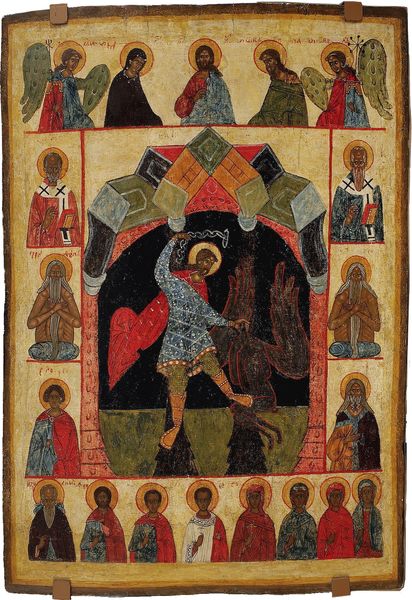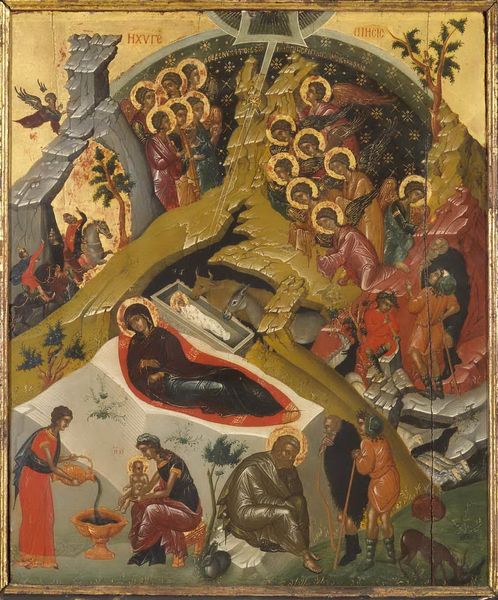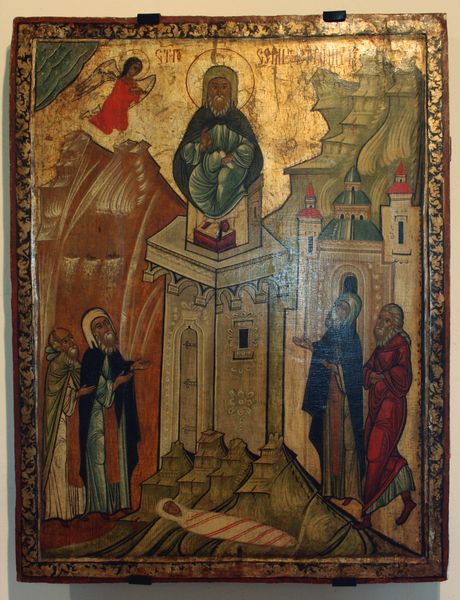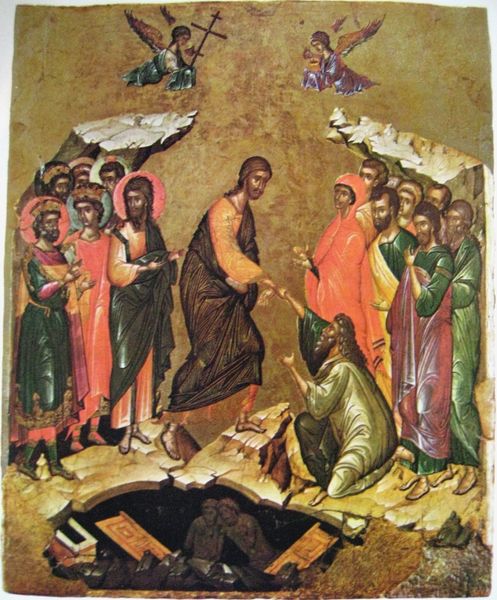
tempera, painting
#
portrait
#
byzantine-art
#
narrative-art
#
tempera
#
painting
#
figuration
#
oil painting
#
cross
#
soldier
#
naive art
#
men
#
portrait art
Dimensions: 27 1/4 x 21 1/2 in. (69.2 x 54.6 cm)
Copyright: Public Domain
Curator: This is “Christ Bearing the Cross,” an icon rendered in tempera, dating roughly between 1489 and 1500. It’s attributed to Nicolaos Tzafouris, a Cretan artist. Editor: Immediately, the shimmering gold background and stylized figures give it a sense of otherworldly formality. The stark geometry of the cross contrasts with the softer shapes of the figures, but the raw emotion is quite subdued. Curator: As a piece of Byzantine-influenced art, its power resides less in naturalism and more in its function as a devotional object. Consider the application of gold leaf – its value would resonate with a wealthy patron but would simultaneously signify a divine light. Editor: That's a key point. The gold transforms the painting into something precious. We must ask, where was the gold sourced from? What was the economic status of the person acquiring this painting? Were they part of a trading network that brought gold into the region? The acquisition would certainly embed meaning and imbue this artwork with meaning that stretches beyond a Christian narrative. Curator: Exactly. And look closely at the pigment itself, and the fine brushstrokes, which indicate a workshop setting. Apprentices would have been preparing the materials and executing less important areas, which speaks to artmaking as a communal, labor-intensive process. The icon is not a sole act of creative genius, but it represents broader economic and social structures. Editor: It's the public role of imagery that captivates me here, particularly in the depiction of power. The artist shows the procession to Calvary with a row of soldiers flaunting elaborate armor, almost theatrically. The narrative unfolds through social stratification, a commentary that extends far beyond the purely religious context. The soldiers are not merely characters in a story but become symbols of political control. Curator: Agreed, and that social dimension is intrinsic to the artwork. These works acted as both religious symbols and tangible reflections of power, material, and status. Editor: It does highlight the powerful interaction between spiritual practice and the tangible realities of labor and capital. Curator: Considering the social and material factors, we are allowed an ever-richer engagement with art from the late medieval period. Editor: Precisely. These visual and physical considerations, as demonstrated through this art piece, illuminate the socio-cultural narratives that the piece tells beyond the obvious.
Comments
No comments
Be the first to comment and join the conversation on the ultimate creative platform.

